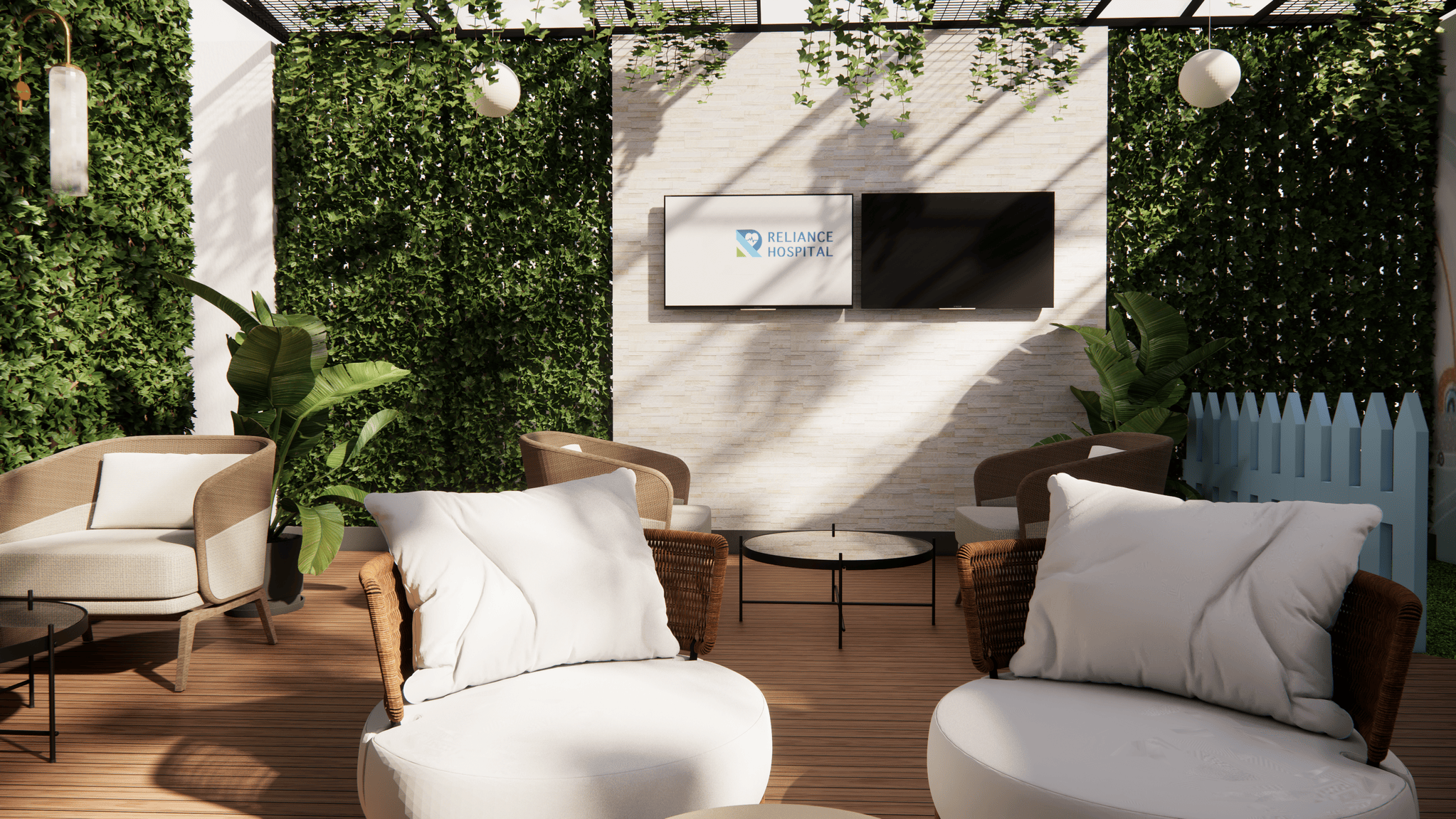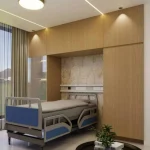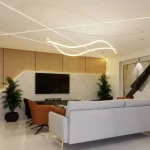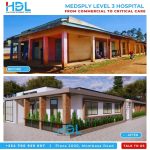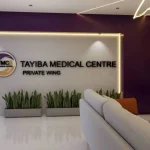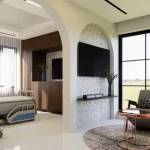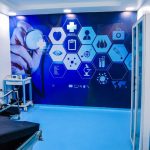Transforming Hospital Design Through Evidence
In today’s rapidly evolving medical field, designing a healthcare facility isn’t just about appearance, it’s about outcomes. Evidence-Based Design (EBD) is an approach that applies clinical research and behavioral science to inform decisions in healthcare architecture. By grounding hospital design in proven studies, healthcare spaces can improve recovery times, reduce errors, and enhance operational flow.
Healthcare Designers Limited (HDL) is one of the top hospital constructors in Kenya, specializing in creating environments that promote healing and performance. We believe that hospital architecture in Kenya must not only meet Ministry of Health standards but also reflect global design innovations to ensure the best patient and staff experience.
What Is Evidence-Based Design in Hospitals?
Evidence-Based Design integrates credible data into architectural strategies, improving both the clinical environment and patient outcomes.
Examples of EBD in practice include:
Maximizing natural daylight in patient rooms
Designing layouts that reduce walking distances for nurses
Using acoustically treated materials to reduce noise
Incorporating biophilic features to decrease stress and improve mental health
Installing cleanable, antimicrobial surfaces in high-risk zones
The outcome is a healing environment built on science not assumption.
Benefits of Evidence-Based Design in Healthcare Facilities
For Patients
Evidence-Based Design creates hospital environments that actively contribute to faster recovery and better health outcomes.
Reduced infection rates: By incorporating infection-resistant materials, negative pressure rooms, and improved air circulation systems, EBD helps reduce hospital-acquired infections (HAIs).
Shorter hospital stays: Calming interiors, natural lighting, and quiet spaces minimize patient stress, accelerating healing and reducing recovery times.
Lower anxiety and stress levels: Design features like biophilic elements, soothing color palettes, and intuitive layouts provide a more comforting, less clinical experience, particularly helpful for vulnerable patients such as children or the elderly.
These elements work together to support the emotional and physical healing process, showing that the space itself plays an active role in care delivery.
For Staff
When hospitals are designed using research-backed principles, the staff experience improves significantly. Better work environments lead to better care.
Better workflow efficiency: Smart layouts reduce unnecessary walking distances and ensure that supplies, equipment, and patient rooms are positioned logically. This leads to faster response times and smoother patient handling.
Reduced fatigue and burnout: Ergonomically designed workspaces, access to natural light, and break zones help reduce mental and physical fatigue, which in turn boosts morale and retention rates.
Safer work environments: EBD ensures proper zoning, visibility, and infection control, which lowers workplace hazards for doctors, nurses, and other caregivers.
Healthcare Designers Limited (HDL) incorporates these staff-friendly design principles into every healthcare facility to boost both performance and well-being.
For Hospital Owners & Developers
For facility owners and developers, EBD isn’t just about aesthetics, it’s a smart business strategy that drives long-term success.
Higher patient satisfaction scores: Comfortable, safe, and welcoming environments improve a hospital’s reputation, leading to positive reviews and increased patient loyalty.
Long-term operational savings: EBD emphasizes durability, energy efficiency (e.g., solar integration), and modular adaptability, reducing maintenance costs and future upgrade expenses.
Faster return on investment (ROI): Better design leads to smoother operations, fewer errors, and higher throughput—contributing to quicker revenue generation and cost recovery.
We integrate these strategic advantages into every hospital construction project management plan, starting from the concept phase to ensure the best possible outcome for all stakeholders
Core Features of Evidence-Based Hospital Architecture
1. Natural Light Optimization
Numerous studies show that daylight supports circadian rhythms and reduces depression in patients. HDL integrates south-facing windows, roof lights, and light shelves into design schemes to maximize exposure.
2. Acoustic Planning & Quiet Zones
Noise contributes to patient dissatisfaction. HDL uses sound-absorbing materials, zoned corridors, and equipment buffering zones to maintain acoustic comfort.
3. Intuitive Layouts & Staff Efficiency
We design floorplans that place critical spaces like nurses’ stations, treatment areas, and supply rooms in optimal proximity. This reduces error and walking distances, which leads to higher productivity.
4. Modular Flexibility in Hospital Design
The ability to expand or repurpose is vital. HDL uses modular prefabrication systems, ideal for future-proofing hospitals and scaling capacity during pandemics or national emergencies.
5. Private Patient Rooms
Single occupancy rooms enhance privacy, reduce infections, and accommodate family visits. They are now considered a best practice in modern hospital design.
6. Ventilation & Infection Control
Our engineering teams install hospital-grade HVAC systems, negative pressure isolation rooms, and touchless access points. These upgrades improve hygiene and reduce the spread of airborne pathogens.
How Interior Design Supports Healing
At HDL, we blend hospital interior design with clinical functionality. Our healthcare facility interior designers select calming palettes, durable materials, and ergonomic furniture that enhance patient experience while supporting medical protocols.
Wayfinding Systems using color-coded zones
Waiting areas with biophilic materials and indoor plants
Anti-fatigue flooring for clinical zones
Lighting systems with circadian rhythm adjustment
EBD in Practice: Pediatric & Maternity Hospital Design
In our ongoing upgrade of the Pediatric Wing at Reliance Hospital in Nairobi, HDL has applied Evidence-Based Design (EBD) by introducing
Color psychology and playful architecture to reduce child anxiety
Family-centered waiting areas and breastfeeding rooms
Infection control through spatial zoning and airflow mapping
In our Kamaki Level 5 Maternal Hospital project, design strategies included:
Positioning labor wards near neonatal units
Creating observation-based postnatal rooms
Using soft lighting and local materials to create a welcoming atmosphere
Why Choose HDL as Your Hospital Design Partner?
With over a decade of experience, HDL is a recognized leader in hospital construction project management and healthcare architecture in Kenya.
What sets us apart:
Data-driven healthcare design strategies
Deep knowledge of MoH compliance standards
Full-service solutions from design to build and interiors
Focus on sustainability, safety, and scalability
Whether you’re upgrading a mission hospital or launching a specialist clinic, HDL brings evidence, innovation, and execution together.
Conclusion
The future of hospital design lies in evidence-backed planning, modular construction, and patient-centric interiors. Through EBD, healthcare facilities become more than places of treatment, they become instruments of healing.
Aligning your project with HDL’s research-driven approach guarantees compliance, maximized efficiency, and measurable impact at every stage.

